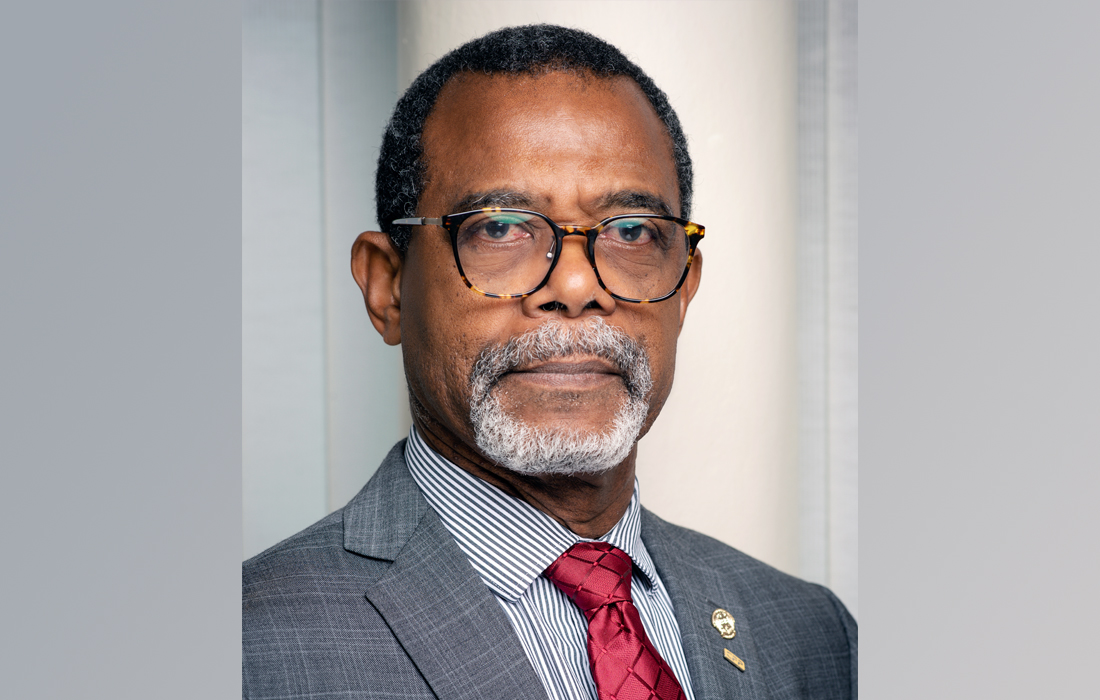
18 Mar Interview with Lyle Alexander, Commissioner and Chairman, Port Authority of Trinidad and Tobago
Can you provide an introduction to the port’s structure and explain your role as chairman?
ALEXANDER: Port operations in Trinidad have a history spanning over a century and since gaining independence 62 years ago, they’ve evolved into a structured system of Strategic Business Units (SBUs). Currently, the port’s operations are managed by three SBUs: the Port of Port of Spain handling cargo, the Port of Spain Infrastructure Company (POSINCO) managing real estate and the Trinidad and Tobago Inter-Island Ferry Service (TTIT) managing ferry transport.
POSINCO oversees lands stretching from the Movietowne complex to National Petroleum’s headquarters in Sea Lots, including reclaimed areas. The ferry service plays a vital social role, connecting Trinidad and Tobago, while the cargo operations are the economic backbone of the country. Our multi-operations port handles containerized cargo, less-than container loads and fluids, supporting industries like the flour mills. During the pandemic, we continued operations uninterrupted, which is a testament to the dedication of our employees. Despite typical worker-management challenges, I’m proud of the team’s resilience and commitment to keeping the port running.
We’ve identified several areas needing attention, with productivity being a key focus. Currently, we are the only public port in the region, while others have partnered with private investors to stay competitive. To remain relevant, we need to address this by investing in both equipment and our workforce. We’ve made progress, replacing outdated equipment, including two ship-to-shore cranes, trucks and trailers, with a total investment of over $18 million. Much of this funding has come from the government’s public sector investment program (PSIP). However, the challenge lies in the timely availability of funds, as PSIP competes with other sectors like education and health. This highlights the importance of attracting private investors to gain the flexibility needed to further improve our operations.
Do you lobby for the budget or is it allocated by the Ministry of Works and Transport?
The budget is allocated through Works and Transport, but like any other budget, it faces cuts when needed. Despite a significant reduction, we’ve still been allocated almost $30 million in the past two years, largely for equipment acquisition. Once that process starts, it must be completed and we’ve had strong support from the ministry to ensure that we can do acquisitions which have included essential equipment like cranes, trucks and stackers, while we’ve also focused on staff training and development. While there are challenges and some dissatisfaction among employees, we’re addressing these issues. As we look to attract an investor, I’m confident that all parties will come together to make the necessary decisions for the future.
The port is looking for private investors to form a public-private partnership for the running and managing of the port. How many bids are currently being evaluated and when will evaluation be completed?
We currently have six potential investors, including two international players and are in the process of assessing their qualifications. Right now, we’re reviewing their submissions to determine who will proceed to the final proposal stage. We expect to identify the qualified candidates within two weeks and aim to select an investor by early next year. This ambitious project follows a landlord model concession and we’re optimistic about the opportunities it presents. Our location, south of the hurricane belt, offers a competitive edge, particularly compared to Florida, which faces hurricane challenges. Additionally, Trinidad and Tobago’s proximity to Guyana and Suriname, combined with our oil and gas experience, positions us as an attractive investment destination for those willing to navigate associated risks.
Last year was the best since the pandemic for passenger arrivals in T&T. What are you discussing regarding port infrastructure, Trinidad and Tobago’s unique selling points and attractions to attract cruise ships?
The main challenge for our cruise sector is our location. Being further south, it costs cruise companies more in fuel, so we need to make the destination appealing by highlighting the benefits. While the port provides access and key services, making Trinidad and Tobago a more attractive stop requires coordinated efforts. Whether that involves government or private sector initiatives, it’s an opportunity for stakeholders to come together and decide the best way forward. Currently, we can only accommodate two cruise ships comfortably, so any future investment would likely require expanding berths. Decisions on this are still pending. Locations like Chaguaramas and the water taxi terminal are being considered for expansion. POSINCO controls the seabed, so dredging and construction in the shallow gulf are possible. Beyond Trinidad, we also manage cruise shipping in Charlotteville and Scarborough, with Charlotteville being a deep port that attracts cruise ships. There are many opportunities for expansion across Trinidad and Tobago, but the key is making these options appealing to potential investors.
How do you assess the importance of the Port of Spain compared to Point Lisas or Scarborough in terms of container volume and the variety of products handled, such as liquids and break bulk? What strategies do you use to expedite the clearance of different imports?
Port of Spain remains the only multi-purpose port in the country, handling cruise ships, naval vessels, rail cargo and vehicles — services Point Lisas doesn’t offer. While we strive for efficient operations, customs and immigration control are managed by external parties, which can slow down processing. Compared to Point Lisas, our wider range of operations creates different challenges, like heavy truck traffic on Wrightson Road. Addressing these issues requires a national solution, including changes to work schedules (e.g., 24-hour services) and updating legislation to ease congestion and improve overall efficiency.
We are optimistic that an incoming investor will help us capitalize on our history of container movement and transshipment. Last year, we handled 300,000 twenty foot equivalent units (TEUs), while our current capacity is 614,000 TEUs. With the investor’s target in mind, we believe we can present a compelling investment opportunity. If we can improve productivity and increase vessel turnaround times, the potential for growth is significant. Our goal is to operate a fully functional 24-hour port, which would greatly contribute to the country’s economy. We recognize that our work goes beyond mere logistics; it plays a vital role in the nation’s sustainability.
How does Port of Spain perform in terms of regional connectivity. Earlier in 2024 there was talk about inter-island services with Barbados and Guyana; what is the current status of that? Overall, how would you rate the performance of Port of Spain compared to other regional ports?
Compared to other regional ports, we stand out for our diverse operations, handling cruise ships, naval vessels, cargo and rural transport while also managing Caribbean Community (CARICOM) trade. No other port in the region offers such a comprehensive range of services. I strongly advocate for the inter-island ferry service, as there’s enough food supply potential in Guyana to support the entire CARICOM. While we currently lack the infrastructure for this, we already have a regional ferry service in place, with boats leaving weekly for other islands. However, passenger capacity remains uncertain due to the rapid developments in air travel. The demand for passenger ferries may only cater to a niche market, such as organized trips for research or school visits, reminiscent of my first ferry trip during high school.
To establish a reliable food supply chain between the islands, we’re in discussions about the right equipment needed for efficient operations. We need to consider the distances we must cover, the available equipment and how to integrate these factors to meet regional demands. By enhancing local supply, we can reduce reliance on imports from the U.S. and Mexico for items like pineapples and oranges. The inter-island ferry service is a promising solution but requires a strong commitment to sustainability, as maintaining vessels and routes demands significant resources. For governments to support this initiative, they need to understand the requirements and challenges involved. While governments may struggle to sustain it long-term, they can facilitate private sector involvement through various arrangements. Ultimately, it’s crucial for all stakeholders to grasp the issues at hand and collaboratively identify solutions to make this vision a reality.
What measures do you have in place to mitigate your environmental footprint and impact on the local environment, particularly regarding hazardous waste and shipping effects on marine life?
We have good intentions and a clear understanding of our challenges and objectives. With global expectations for green initiatives by 2030 approaching, it’s crucial to act. We are exploring how to meet the cruise shipping industry’s requirements, including discussions with Proman about methanol and establishing shore-based services for incoming vessels. The prime minister has also mentioned Trinidad as a potential methanol bunkering location. While we haven’t fully implemented all initiatives yet, we have committed to including a green component in all new equipment tenders. These small steps are part of our broader goal to achieve a more sustainable operation and preserve our environment.
What is your final message for the Miami Herald?
Trinidad and Tobago offers great opportunities for business investment for several reasons. While profit is a primary motive, investors can also contribute to the region’s development. The country has numerous investment prospects with strong profit potential. Despite some challenges that may slow progress, I see these as part of a continuous improvement process. Legislative awareness is growing and steps are being taken to facilitate investment. Although crime may be highlighted in the media, many of us living here feel secure and recognize the stability of our environment. While improvements are needed, I believe investing in Trinidad and Tobago remains a promising opportunity for satisfactory returns.


Sorry, the comment form is closed at this time.